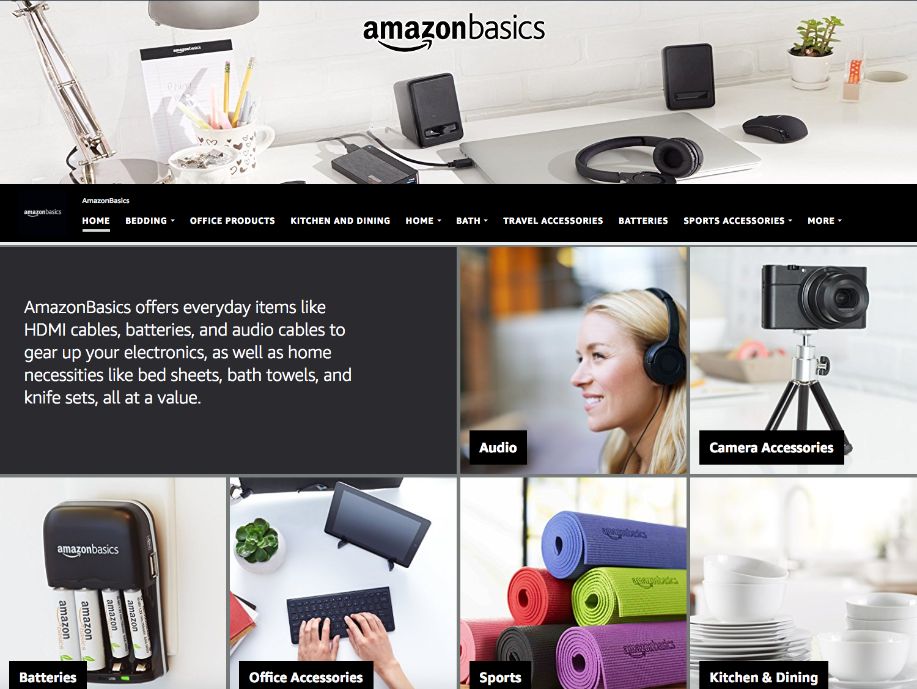Image screenshot of AMAZONBASICS HOMEPAGE
Emotional > Transactional
It’s challenging to find news articles that don’t bemoan Amazon’s dominance. The retail (and search engine) giant does a few things incredibly well, particularly providing a seamless shopping experience.
One thing that Amazon lacks (and where you can shine) is the establishment of an emotional connection between the buyer and your products through branding and marketing.
Consumers make emotional purchases: buying the same baking flour that grandma used in her recipes, fast relief for a crying baby, a lovely diamond necklace for that special someone, a Harley-Davidson for his 55th birthday.
Compare that to transactional purchases with daily deal sites, CPG brands or AmazonBasics. Daily deal sites rely on extreme discounting to gain customers, who rarely come back for a second purchase. This strategy also led to their demise.
Shoppers are looking to develop genuine relationships with brands who understand who they are. You can convey this through better branding, genuinely personal marketing, and a better product thanks to insights from customer reviews and feedback.
If you’ve made a strong emotional connection with the customer, they’d go back to the Orders page and click the “Buy it Again” button. Or ideally, they’d purchase it directly from your website.
Diversify
AmazonBasics isn’t the death knell of your product line. Let its dominating presence propel you to better create and market your products, and provide superior customer service.
Also, think about your overall business strategy. We always recommend diversifying your sales channel, and to even experiment with other marketplaces or by going wholesale. Test your own product catalog by offering niche or hard-to-find products that have minimal risk of being targeted by AmazonBasics.
When you’re ready to expand, TradeGecko’s inventory and order management software works with Amazon to streamline operations and help you reach more customers worldwide, 24/7.










